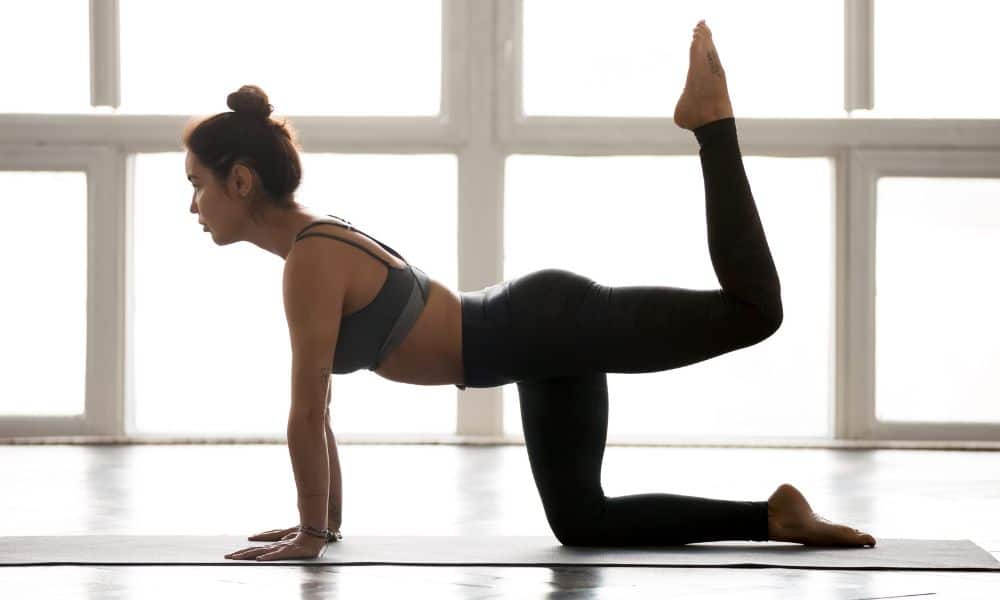Building strong, well-defined glutes is essential for aesthetics, performance, and overall lower body strength. Among the best exercises to activate and grow your glutes are glute bridges and hip thrusts. These moves target the gluteus maximus, gluteus medius, and supporting muscles, making them powerful tools in any lower body routine. Here’s a breakdown of how each exercise works, their benefits, and tips for maximizing their effectiveness.
Why Are Glute Activation Exercises Important?
The glutes play a critical role in stabilizing the pelvis, supporting proper hip alignment, and providing power for movements like running, jumping, and lifting. Weak or inactive glutes can lead to muscular imbalances, potentially causing lower back or knee issues. Incorporating glute bridges and hip thrusts into your workout helps to target and activate the glutes, ensuring they’re engaged and contributing to overall body movement and balance.
What’s the Difference Between Glute Bridges and Hip Thrusts?
While glute bridges and hip thrusts look similar, there are some key differences in their execution and benefits:
- Glute Bridges: Performed lying on the floor with your feet planted, you lift your hips toward the ceiling, squeezing the glutes at the top. Glute bridges are usually a bodyweight exercise and are an excellent starting point for beginners or those with limited equipment.
- Hip Thrusts: Involve a greater range of motion and are usually performed with your upper back resting on a bench. Adding weight (like a barbell) to your hip thrusts can significantly increase glute activation, making them more challenging and effective for advanced lifters.
How to Perform a Glute Bridge Correctly
- Set-Up: Lie on your back with your knees bent, feet flat on the ground, and arms by your sides. Position your feet about hip-width apart.
- Lift Your Hips: Press through your heels and lift your hips toward the ceiling until your body forms a straight line from your shoulders to your knees.
- Squeeze at the Top: At the peak of the movement, squeeze your glutes tightly, hold for a second, and then lower your hips back to the starting position with control.
- Repeat: Aim for 3 sets of 15-20 reps. Focus on form and glute engagement rather than speed.
How to Perform a Hip Thrust Correctly
- Set-Up: Sit on the floor with your upper back against a bench and a barbell over your hips (if using weight). Position your feet shoulder-width apart, knees bent at 90 degrees.
- Lift Your Hips: Drive through your heels to lift your hips, creating a straight line from your shoulders to your knees at the top.
- Squeeze the Glutes: At the top, squeeze your glutes hard, hold for a second, then lower your hips back down with control.
- Repeat: For muscle growth, aim for 3-4 sets of 10-12 reps. Use a weight that challenges you but allows you to maintain good form.
Why Are Glute Bridges and Hip Thrusts Effective for Glute Activation?
Both exercises effectively activate the gluteus maximus, the largest glute muscle, which is responsible for hip extension and contributes to athletic movements. Studies show that hip thrusts, in particular, engage the glutes to a greater degree than many traditional lower body exercises like squats, especially when additional weight is added. This makes them ideal for individuals looking to maximize glute activation, growth, and strength.
Glute Bridges vs. Hip Thrusts: Which One is Better?
Each exercise has its advantages:
- Glute Bridges: Ideal for beginners, warm-ups, or those focusing on bodyweight training. They engage the glutes with minimal equipment and are great for high-rep activation work.
- Hip Thrusts: Allow for a greater range of motion and heavier loading, making them more effective for strength and muscle growth. They’re recommended for lifters who have mastered the glute bridge and want a more challenging, glute-focused exercise.
For maximum glute development, consider incorporating both exercises into your workout routine. Glute bridges can serve as a warm-up or finisher, while hip thrusts can be your main, heavy lift for the glutes.
Tips for Maximizing Glute Activation During Glute Bridges and Hip Thrusts
- Focus on Form: Ensure your back is flat and that you’re squeezing your glutes at the top of each rep. Avoid arching your back or overusing your lower back.
- Mind-Muscle Connection: Actively think about engaging your glutes during each rep. This “mind-muscle connection” has been shown to increase muscle activation and improve results.
- Add Resistance: Once bodyweight glute bridges feel easy, add a resistance band around your knees or use a dumbbell/barbell to make the exercise more challenging.
- Use a Full Range of Motion: Lower your hips until they nearly touch the ground (without resting) and fully extend them at the top. This full range promotes muscle growth and engagement.
- Incorporate Tempo Changes: Slow down the lowering phase (eccentric) of each rep to increase muscle tension, or try holding the top position for a few seconds to further challenge your glutes.
Sample Glute-Focused Workout Routine
To maximize your glute gains, here’s a sample workout combining glute bridges, hip thrusts, and complementary exercises:
- Warm-Up: Dynamic stretching and glute activation with a resistance band (e.g., lateral band walks).
- Hip Thrusts (4 sets of 10-12 reps) – Your main glute movement for strength and growth.
- Bulgarian Split Squats (3 sets of 10 reps per leg) – Focuses on unilateral leg strength and glute engagement.
- Glute Bridges (3 sets of 15-20 reps) – Use these as a secondary exercise to add volume and reinforce glute activation.
- Cable Pull-Throughs (3 sets of 12 reps) – Targets the glutes and hamstrings with a hip hinge movement.
- Single-Leg Romanian Deadlifts (3 sets of 10 reps per leg) – Helps improve balance and isolates each glute individually.
- Cool Down: Static stretching, focusing on the glutes, hamstrings, and hip flexors.
Key Takeaways for Glute Bridges and Hip Thrusts
Glute bridges and hip thrusts are two of the best exercises for activating and strengthening the glutes. Glute bridges are great for beginners or as a warm-up, while hip thrusts allow for progressive loading and greater glute activation. By including both in your routine and focusing on form, mind-muscle connection, and resistance, you can maximize your glute gains and improve lower body strength, stability, and aesthetics.
Consistent training and gradual progression will help you achieve the strong, well-defined glutes you’re aiming for, supporting your fitness goals and overall functional strength.




